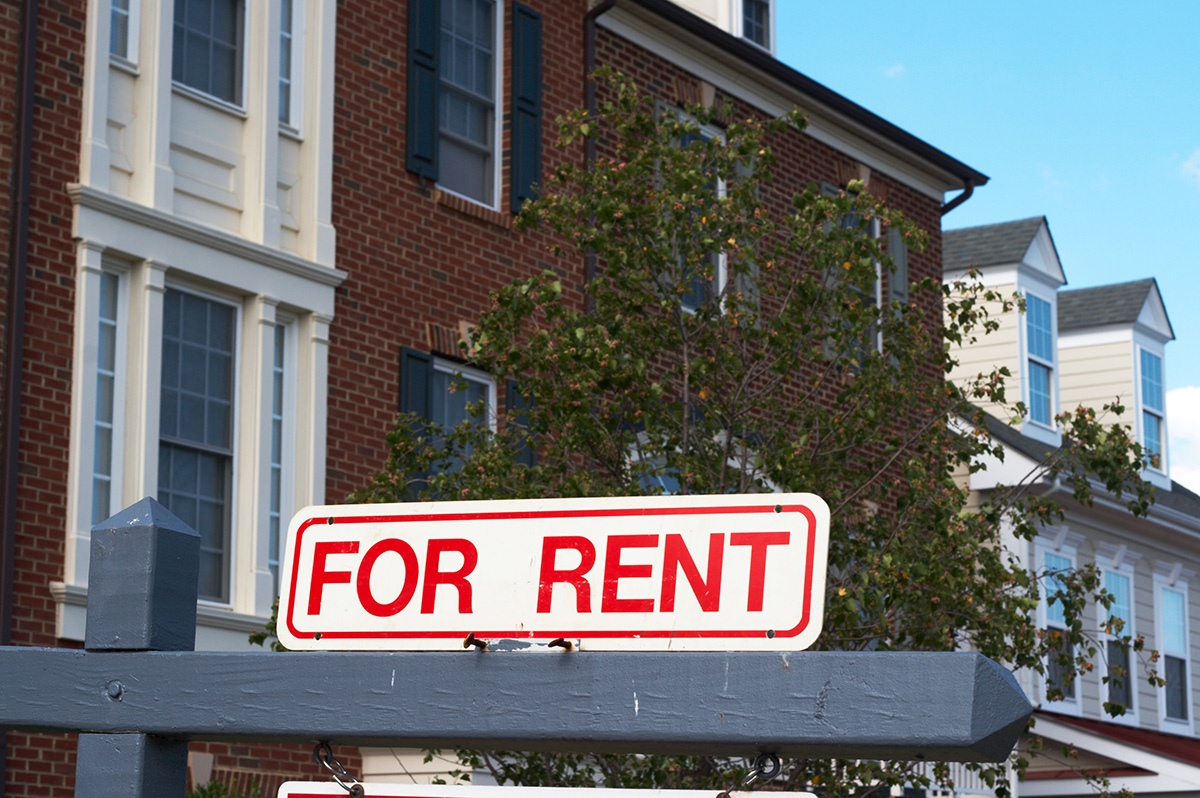Real Estate
What the tax bill means for buyers, homeowners
There’s good news and there’s bad news


There’s good news and there’s bad news in the new tax bill.
In case you missed it, the hotly debated new tax bill has officially passed. Since real estate is one of the key areas of change in the bill, everyone is asking us, “What does the new tax bill mean for me? Is this good news or bad news for D.C.-area buyers and sellers?” The answer, as it so often is in real estate is, “it depends!”
The initial version of this new tax bill would have been troublesome for real estate values in our area. It slashed the mortgage deduction in half, had big changes for capital gains, and made it much more expensive to move. Several changes were made between the initial draft and the final form, which makes the final impact of the bill more of a mixed bag. There’s good news and there’s bad news.
So without further ado, here are the main changes and takeaways affecting homeowners in our area.
MORTGAGE INTEREST DEDUCTION
THE CHANGE: Through the end of 2025, new homebuyers will only be able to deduct interest on the first $750,000 of a mortgage (down from $1 million). In 2026, the deduction cap will revert to $1 million in loan value. Existing mortgages will be unaffected.
THE IMPACT: None for existing homeowners or new buyers with loan amounts under $750,000. While this reduction is bad news for upper price point buyers, the news is much better than the original proposal, which was a reduction to $500,000 and would have affected the majority of mortgages in our area. Remember, these are loan amounts – NOT sales prices. Thus, the only impact will be for buyers with loans above $750,000 – which most often is homes above $825,000 – depending on how much the buyer is financing. While it is possible the bill could cause a small slowdown for “move-up” buyers in our market, we don’t anticipate this causing a major change now. The impact of the new cap will probably make it less attractive to refinance in upper brackets. If your loan existed before December 14, 2017 up to $1,00,000 can still deduct the interest as long as the new loan does not exceed the amount refinanced.
Let’s look at Buyers A & B to see how this new cap comes into play.
Buyer A is putting 10% down on a sales price of $825,000, meaning he has a loan of $750,000, which is the deduction limit. Buyer A would be unaffected.
Buyer B is putting 10% down on $1,000,000, which is a loan amount of $900,000. The deduction can still be taken, but can only be taken on the first $750,000. Buyer B would not be able to deduct the interest paid on $150,000 of the loan (the difference between $750K-$900K).
HOME EQUITY LOAN INTEREST DEDUCTION
THE CHANGE: The new tax bill also suspends the deduction for interest on home equity loans until 2026. Currently, deductions are allowed for loans up to $100,000. Caveat: the interest on a home-equity loan can be deducted if the proceeds are used to substantially improve the home.
THE IMPACT: This change makes it less attractive for homeowners to take out equity lines on their homes in order to do minor renovations or use their home’s equity to pay for other things like kids’ college tuition or other big purchases. While this change is certainly frustrating for those planning to take advantage of these loans, it shouldn’t affect the housing market in a significant way since it is typically utilized by homeowners who have been in their properties for several years (and have equity) and are planning to stay longer to regain the equity over time.
MORTGAGE INTEREST ON A SECOND HOME DEDUCTION
THE CHANGE: The interest deduction on loans for a second home will still be allowed. However, homeowners can only deduct the first $750,000 of interest on the combined value of loans on their first and second homes.
THE IMPACT: Owners of multiple properties will feel this one. The bad news is there is likely to be a large impact on housing markets in resort or second home areas, as it will certainly be more expensive to own more than one property. While we are not a second home market, we have many clients buying properties in our area to be near their kids and grandkids. Similarly, we have many service members who take advantage of their housing allowance and low down payment opportunities with VA loans to keep their homes in other areas while buying a home when they are stationed here in the DC area. The impact of this change remains to be seen.
“SALT” DEDUCTION FOR STATE & LOCAL PROPERTY TAX
THE CHANGE: Individuals can only deduct up to $10,000 in state and local income and property taxes or state and local property and sales taxes. Previously, there was no cap on this deduction.
THE IMPACT: Homeowners living in high property tax states (like New Jersey with an average rate of 2.38%) will likely see an increased tax bill come April. Nationally, ATTOM Data Solutions estimates that 4.1 million Americans pay more than $10,000 in property taxes so it will affect many Americans. Locally, average property tax rates are more reasonable (Maryland is 1.1% which is #22 nationally, Virginia is .78% which ranks #37 nationally and D.C. is .57% bringing up the rear at #46 nationally), so it should have less of an impact here than it does in some of the higher-taxed states.
DEDUCTIONS FOR WORK-RELATED MOVING EXPENSES
THE CHANGE: Reasonable moving expenses for work-related relocations are no longer deductible – with the exception of those in the military.
THE IMPACT: While it is possible that fewer people will want to move due to this deduction, generally these types of moves come with increased salaries and opportunity, so we don’t anticipate big changes to the market because of this change.
CAPITAL GAINS
NO CHANGE. Despite some back and forth, the deduction for up to $500,000 in capital gains (or $250,000 for single filers) from selling a primary home remains (so as long as it has been the primary residence for two of the last five years). This is a big win, as previous versions of the bill sought to make the tenure requirements five of the last eight years as the primary residence.
SO, WHAT DOES THE NEW TAX BILL MEAN FOR HOMEOWNERS & HOUSE HUNTERS?
The good news is that many of the real estate changes in the new tax bill will have much less of an impact than previous versions of the bill suggested. On the plus side, it’s possible that the impact of the lowered deduction could be offset by lower income taxes for these high-end homebuyers, specifically business owners or those in “pass-through” businesses, which will see a big tax deduction on their income.
The bad news is we might see an impact in our “move up” market. We will carefully watch buyers’ reactions to the home mortgage deduction limit to $750,000, which could make “moving up” slightly more difficult in upper bracket price points. This change is likely to have the biggest impact in our market. Nationally, we may see a decrease in people buying vacation properties so resort areas will likely take a hit. We’ve read statistics that predict the changes could lower home values by 4%.
The bottom line? While there might be some slow down and a temporary dip in values while everyone comes to terms with the changes in the new tax bill, we don’t anticipate a significant long-term effect at this point. This is certainly a change from our perspective just a few short weeks ago when the bill was still in draft form.
We have been following this bill closely and know how impactful these changes are to your life. We’re here to help you through this complex process. If you are thinking of buying or selling and wondering what these changes might mean for you and your bottom line, please reach out. We are always happy to help.
Allison Goodhart DuShuttle is lead agent for The Goodhart Group, Alexandria’s and McEnearney Associates’ top-producing real estate team. In 2015, she was nationally recognized by Realtor Magazine, being named to its “30 Under 30” club. Allison can be reached at 703-362-3221 or [email protected].
Real Estate
Navigating DMV real estate market during political unrest
Reductions in federal employment have introduced uncertainties

The Washington, D.C.-Maryland-Virginia (DMV) region has long been recognized for its robust housing market, underpinned by the presence of the federal government and a diverse economic landscape. Recent massive reductions in federal employment have introduced uncertainties, yet the area continues to offer compelling reasons for prospective homebuyers, particularly within diverse communities.
While the federal government has traditionally been a significant employer in the DMV, the region has proactively diversified its economic base. Sectors such as technology, professional services, education, and healthcare have expanded, mitigating the impact of federal job cuts. This diversification fosters some economic resilience, which offers our area a semblance of protection against the impending unknowns that we currently face. Nothing can shield real estate entirely; however, our area tends to survive these types of changes better than other parts of the country.
Despite concerns over federal layoffs, the DMV housing market has demonstrated notable stability. Analyses indicate that the number of active listings, sold properties, and median sales prices have remained steady on a year-over-year basis. This steadiness suggests that the market is adapting to changes without significant disruption.
Furthermore, while there has been a slight increase in home listings, this trend aligns with typical seasonal variations and does not solely reflect federal employment changes. The luxury property segment, in particular, continues to thrive, indicating sustained interest and investment in the region.
The DMV region is renowned for its cultural and demographic diversity, with areas like Montgomery County, Md., being among the most ethnically diverse in the nation. This inclusivity extends to various communities, including LGBTQ individuals, fostering a welcoming environment that enhances the area’s appeal. Even though the current administration is fostering anti-diversity ideology, I remain confident that our LGBTQ community will continue to thrive even as these destructive forces work against us.
Local governments within the DMV have implemented policies aimed at promoting affordable housing and preventing displacement, particularly in the wake of economic shifts. Initiatives like the Douglass Community Land Trust in Washington, D.C., exemplify efforts to maintain housing affordability and support community stability.
Additionally, jurisdictions such as Montgomery County have longstanding Moderately Priced Dwelling Unit (MPDU) programs that require developers to include affordable housing in new residential developments. These policies contribute to socioeconomically mixed neighborhoods, benefiting diverse populations.
Despite Elon Musk’s brandishing of a chainsaw to the federal workforce, our real estate market continues to thrive. The DMV region maintains its appeal. Economic diversification, market stability, commitment to diversity and inclusion, and progressive housing policies collectively contribute to an environment that supports and attracts diverse communities. Prospective homebuyers can find reassurance in the region’s resilience and ongoing efforts to foster an inclusive and vibrant community. These are only a few among the many reasons to have a positive outlook while considering real estate options in our area.
It is important to consider working with brokerages, brokers, agents, lenders and title companies who align with our community and our objectives. Not all LGBTQ agents work for brokerages that support or understand the needs of the members of our community. Do your research and find out who has donated money to what political causes. Now more than ever we must support members of our community to protect our way of life and our very existence.
Stacey Williams-Zeiger is president/principal broker of Zeiger Realty Inc. Reach her at [email protected].

Whether you are upgrading parts of your current home to prepare it for sale or enhancing the home you just purchased, kitchens and bathrooms are still at the top of the renovation list.
Kitchen renovations have always embraced a blend of functionality, personalization, and aesthetic appeal; however, homeowners are currently moving away from sterile, uniform designs, opting instead for spaces that reflect warmth, character, and individual style. Here are some of the most prominent trends shaping kitchen renovations this year.
Warm and Earthy Tones
The dominance of all-white kitchens is waning as homeowners gravitate toward warmer, earth-toned palettes. Shades like sage green, navy blue, and natural wood finishes are becoming popular choices for cabinetry, infusing kitchens with a cozy and inviting atmosphere. This shift reflects a desire for spaces that feel more personalized and less clinical. Flat panel and Shaker cabinets continue to be popular options.
Integration of Organic Modernism
The “modern organic” style is gaining traction, characterized by using natural materials, neutral color palettes, and serene layouts. Incorporating elements like soapstone countertops, Venetian plaster walls, slate floors, and greenery not only enhances aesthetic appeal but can also increase home values significantly. Fully outfitted outdoor kitchens further contribute to this trend.
Innovative Kitchen Island Designs
Kitchen islands continue to be central features, with designs evolving to incorporate textures, wood and tile cladding, multifunctional elements, and bold colors and materials. Integrated seating areas, waterfall countertops, and the use of monolithic stone or stacked marble are becoming increasingly popular. These islands not only serve as functional workspaces but also as striking focal points within the kitchen.
Concealed Kitchens for a Sleek Look
The concept of concealed kitchens is on the rise, emphasizing built-in appliances, flush cabinetry, and appliance garages to maintain a clutter-free environment. This design approach fosters a minimalist aesthetic, creating a seamless flow between the kitchen and adjacent living areas, particularly in open-concept homes.
Personalized Cabinetry and Storage Solutions
Customization is key in modern kitchen designs, with homeowners seeking tailored storage solutions that cater to their specific needs. Features like hidden storage compartments, integrated lighting, and unique hardware choices are being favored over generic, cookie-cutter options. This trend underscores a move toward kitchens that are both functional and reflective of personal style.
Revival of Traditional Styles with Modern Twists
Traditional kitchen styles are making a comeback, with a contemporary twist. Elements such as expanded backsplash coverage, classic tile shapes and patterns, use of mixed metals, and specialty appliances are being integrated into modern kitchens, blending the charm of the past with the conveniences of the present. Custom range hoods, coffee bars and microwave drawers are increasingly added to renovation projects. This fusion creates spaces that are both timeless and equipped for modern living.
Sustainable and Natural Materials
Sustainability remains a priority, with an increased use of eco-friendly materials like reclaimed wood, recycled metals and glass, and energy-efficient appliances. This not only reduces environmental impact but also introduces unique texture and shimmer into kitchen designs, adding depth and character to the space.
Use of Bold Colors and Accents
Homeowners are becoming more adventurous with color and texture, incorporating vibrant hues and tactile materials into their kitchen designs. Features like colorful window trims, two-tone cabinets, and the use of wallpaper and feature walls add visual interest and a personalized touch to the space. In addition to the familiar white, major appliances are now shown in matte black, navy, and jewel tones of red, green, and blue. There are even vinyl wraps and magnet covers that allow for more creativity and individualization with appliances.
Integration of Smart Technology
The incorporation of smart technology continues to grow, with appliances featuring automated cooking functions, sensor reheating, and control locks becoming more prevalent. Induction stoves are entering the mix. Charging stations and touch-activated cabinet doors and faucets are also popular. LED lighting lasts longer and prevents you from having to climb a ladder to change lightbulbs on a high or vaulted ceiling. These advancements enhance convenience and efficiency, aligning with the modern homeowner’s desire for a kitchen that supports a tech-savvy and busy lifestyle.
Multifunctional Spaces
Kitchens are increasingly being designed as multifunctional spaces that accommodate cooking, dining, working, and socializing. This has led to the inclusion of features like integrated seating, versatile lighting, and adaptable layouts that can easily transition between different uses, reflecting the evolving role of the kitchen in contemporary homes. Still, don’t be surprised to see a resurgence of self-contained kitchens with real walls.
So, whether the kitchen you want is sleek and modern, earthy and organic, or traditional and elegant, there will always be fresh new styles, ideas, innovations and classic touches that cater to your lifestyle.
Valerie M. Blake is a licensed Associate Broker in D.C., Maryland, and Virginia with RLAH @properties. Call or text her at 202-246-8602, email her via DCHomeQuest.com, or follow her on Facebook at TheRealst8ofAffairs.

Spring is the season of renewal—a time to refresh, declutter, and make space for better things. But spring cleaning isn’t just for your home. Whether you’re a landlord or a tenant, it’s the perfect opportunity to reassess your rental relationship.
Are landlords feeling disconnected from tenants? Are tenants feeling like their landlord is absent? Before considering drastic steps like moving, both sides can take positive, proactive measures to improve communication, set clearer expectations, and foster a mutually beneficial relationship. This article encourages both landlords and tenants to take stock of their rental experiences and explore ways to clean up misunderstandings before they become deal-breakers.
1. Dust Off the Lease: Revisit Foundation of Your Relationship
The lease is the roadmap of your rental journey. Are both sides following it?
For Landlords:
• Review Key Terms: Ensure you fully understand your obligations under the lease and DC law, including maintaining a habitable unit, providing essential services like heat and water, and ensuring repairs are done for safety compliance.
• Clarify Expectations: Is there a disconnect between your expectations per the lease and what you are observing at the rental? Remind tenants of areas that are covered in the lease in a proactive and positive manner to make sure all are on the same page.
• Mid-Lease Check-Ins: A casual mid-lease meeting or email can clarify expectations and correct misunderstandings or interpretations of responsibilities before they become issues.
For Tenants:
• Understand Your Rights and Responsibilities: Review your lease to see what your landlord is required to provide. In DC, landlords must ensure safe, habitable living conditions, but cosmetic changes or upgrades are not guaranteed, unless specified in the lease.
• Know What’s Reasonable: Yes, you have a suite of rights in the District of Columbia which must be respected. Certain societal expectations may not be realistic if they weren’t part of the original agreement. You can always request improvements that are not required of the landlord, but be prepared to respectfully accept the outcome if the response is “No”.
• Proactive Communication: If you have concerns about your rental, present them as collaborative questions. For example, “I noticed X—how would you like for me to address this?”
2. Declutter Communication Channels
Miscommunication is often the root of rental frustrations. Let’s clean that up.
For Landlords:
• Preferred Methods of Communication: Are you providing clear ways for tenants to reach you? Ensure you’re responsive to emails, phone calls, or portal messages.
• Seasonal Reminders: Proactive messages about maintenance (e.g. start cutting the grass, apply pre-emergent weed control, etc) can reduce escalations later.
• Feedback Opportunities: Invite tenants to share concerns in a structured manner—perhaps a quarterly email check-in.
For Tenants:
• Respectful Clarity: When reaching out, be specific about your needs. Instead of “the heater isn’t working,” try “the heater hasn’t been turning on in the evenings and only blows cold air. Could someone check it this week?”
• Understanding Response Times: Some complex issues take longer to resolve. Remain reasonable on expectations and consider the explanations for delays. Understanding that cosmetic concerns may not be prioritized can also help.
• Log Your Communications: Keep a record of all major discussions for clarity and protection.
3. Polish the Relationship: Turn Good Experiences into Great Ones
Small efforts can shine a spotlight on the positive areas in your rental relationship.
For Landlords:
• Recognize Good Tenants: Expressing appreciation for on-time rent payments or good upkeep fosters goodwill.
• Offer Incentives: Small gestures like discounted renewal rates or minor upgrades can encourage long-term, responsible tenants.
• Educational Resources: Provide additional information on how your tenants can maintain aspects of the home, such as garbage disposal care or HVAC filter changes.
For Tenants:
• Be a Proactive Renter: Report maintenance issues promptly and keep the property clean and damage-free. Execute routine maintenance that is your responsibility, such as changing out air filters reliably.
• Community Mindset: Participate in neighborhood events or property meetings, which can strengthen your relationship with the landlord.
• Extend Courtesy: Flexibility with maintenance schedules and clear communication during repairs make things smoother for everyone.
4. Freshen Up Expectations: Reset Standards for Healthier Relationship
Spring is the perfect time to hit the reset button.
For Landlords:
• Collaborate on Solutions: If there are tenant issues (e.g., noise complaints), approach them with a solutions-oriented mindset.
• Transparency with Changes: If rent adjustments are necessary, provide clear explanations and as much notice as possible.
• Renewal Conversations: Discuss future plans early to avoid surprises at lease-end.
For Tenants:
• Understand Market Realities: Rising costs may mean rent increases. Assess whether your current rental still fits your budget and needs.
• Negotiate Thoughtfully: If requesting upgrades or improvements, frame them as benefits for both sides.
• Express Gratitude: A little appreciation can go a long way—thank your landlord for prompt repairs or responsiveness.
5. Knowing When to Move On
Sometimes, despite best efforts, it’s time for a change—but separation can still be positive.
For Landlords:
• Identify Red Flags: Consistent late payments, damage, or lease violations may necessitate initiating a conversation about a potential move for the tenant.
• Follow DC Regulations: The District of Columbia has strict tenant protection laws. Always provide proper notices and follow legal protocols to avoid complications.
• Exit with Professionalism: Treat the end of a lease as a business transition—keep emotions in check and document all steps.
For Tenants:
• Know When It’s Time to Go: If safety, habitability, or repeated issues aren’t resolved despite your best efforts, it may be time to move on.
• Provide Proper Notice: Adhere to lease terms regarding notice periods and leave the property in good condition.
• Leave on Good Terms: Positive references from previous landlords can make applying for future rentals more successful.
Conclusion: Spring Forward, Together
A little spring cleaning in your rental relationship can make a world of difference. For landlords, it’s about resetting expectations, enhancing communication, and retaining good tenants. For tenants, it’s about understanding your rights, being proactive, and collaborating for a better living experience. By refreshing how both sides approach the relationship, you can avoid unnecessary turnover and create a rental experience whereall parties can thrive. After all, sometimes a little tidying up is all it takes for a rental relationship to blossom anew.
Scott Bloom is owner and senior property manager at Columbia Property Management. For more information and resources, go to ColumbiaPM.com
-

 District of Columbia5 days ago
District of Columbia5 days agoFinal push to raise funds, fill D.C. hotels as WorldPride nears
-

 El Salvador3 days ago
El Salvador3 days agoGay Venezuelan makeup artist remains in El Salvador mega prison
-

 District of Columbia4 days ago
District of Columbia4 days agoReenactment of 1965 gay rights protest at White House set for April 17
-

 Maryland5 days ago
Maryland5 days agoFreeState Justice: Transgender activist ‘hijacked’ Moore’s Transgender Day of Visibility event












